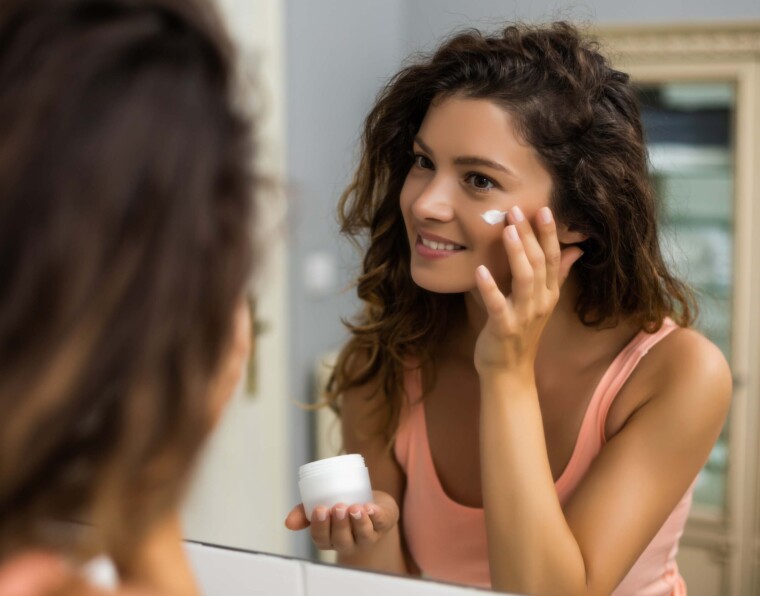Do you have hyperpigmentation? If so, you’re not alone. Hyperpigmentation is one of the most common skin problems among women and can be hard to treat. Fortunately, there is a natural ingredient that can help reduce the appearance of dark spots and prevent future dark spots from forming: niacinamide. In this blog post, we’ll discuss what hyperpigmentation is, how niacinamide can help, the benefits of niacinamide for hyperpigmentation, and how to use niacinamide for hyperpigmentation.
What is Hyperpigmentation?
Hyperpigmentation is a skin condition that causes dark patches or spots on the skin. It is usually caused by excess production of melanin, the pigment that gives skin its color. Hyperpigmentation can be caused by sun exposure, acne, hormonal changes, or other skin conditions. It can affect any part of the body, but is most common on the face, neck, and hands.
How Niacinamide Can Help Hyperpigmentation?
Niacinamide is a form of vitamin B3 that has been found to have a variety of benefits for the skin, including reducing the appearance of dark spots. It works by inhibiting the transfer of melanin to the skin’s surface, which helps to even out skin tone. Niacinamide can also reduce inflammation, which can help reduce redness and irritation associated with hyperpigmentation.
Benefits of Niacinamide for Hyperpigmentation
Using niacinamide for hyperpigmentation has a number of benefits. Here are a few of the most important:
Reduces Appearance of Dark Spots: Niacinamide can help reduce the appearance of dark spots and even out skin tone. It does this by inhibiting the transfer of melanin to the skin’s surface.
Prevents Future Dark Spots: In addition to reducing the appearance of existing dark spots, niacinamide can also help to prevent future dark spots from forming. This is due to its anti-inflammatory and antioxidant properties, which can help to protect the skin from sun damage and other factors that can lead to hyperpigmentation.
How to Use Niacinamide for Hyperpigmentation?
There are two main ways to use niacinamide for hyperpigmentation: topical application and dietary intake.
Topical Application: Niacinamide can be found in many skincare products, such as serums and creams. It is important to look for products that contain at least 5% niacinamide, as this concentration has been found to be most effective. It is also important to use sunscreen while using niacinamide, as it may make your skin more sensitive to the sun.
Dietary Intake: Niacinamide can also be taken as a supplement. However, it is important to talk to your doctor before taking any supplements, as there may be potential interactions with other medications. Foods that contain niacinamide include beef, chicken, fish, mushrooms, and green vegetables.
Conclusion
Niacinamide is a natural ingredient that can help reduce the appearance of dark spots and prevent future dark spots from forming. It can be used both topically and through dietary intake. If you are looking for a natural way to say goodbye to hyperpigmentation, niacinamide may be the answer.
FAQ
1) Can hyperpigmentation be red?
Yes, hyperpigmentation can come in a variety of colors, including red. Red hyperpigmentation is generally caused by sun exposure, inflammation, or other skin injuries.
2) Can hyperpigmentation be reversed?
Yes, hyperpigmentation can be reversed with the use of topical creams, laser treatments, and chemical peels. However, it is important to consult a doctor to determine the best course of treatment.
3) Is hyperpigmentation permanent?
No, hyperpigmentation is not permanent. Depending on the cause, hyperpigmentation can be reversed or treated with a variety of methods.
4) Where does hyperpigmentation come from?
Hyperpigmentation is caused by an increase in melanin production. Melanin is the pigment responsible for skin color and can be triggered by a variety of factors, such as sun exposure, hormones, and genetics.
5) Are freckles hyperpigmentation?
Yes, freckles are a form of hyperpigmentation. They are caused by an increase in melanin production in certain areas of the skin, usually in response to sun exposure.



